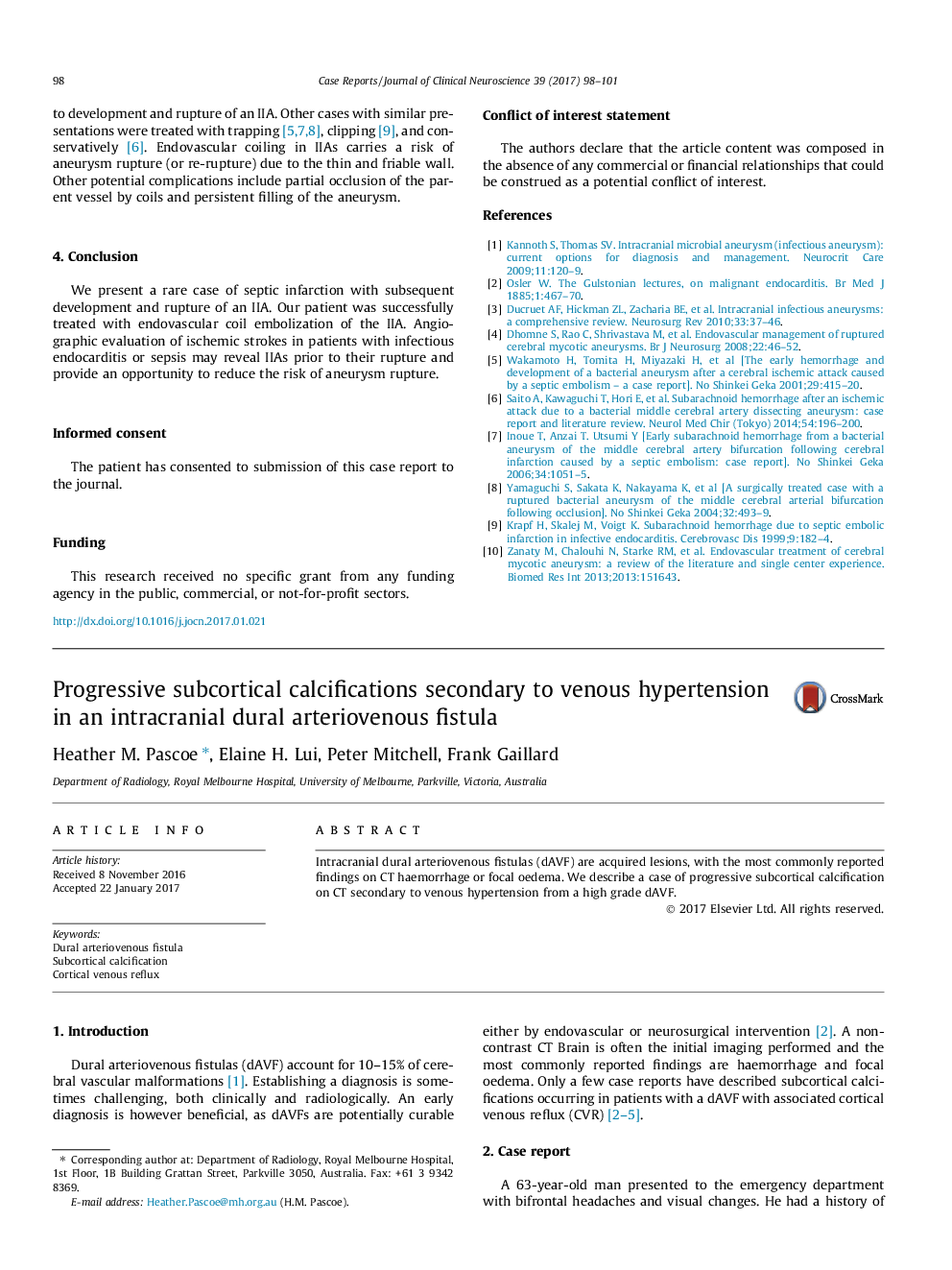| Article ID | Journal | Published Year | Pages | File Type |
|---|---|---|---|---|
| 5629941 | Journal of Clinical Neuroscience | 2017 | 4 Pages |
Abstract
â¢Establishing the diagnosis of a dural arteriovenous fistula (dAVF) can be challenging.â¢The most commonly reported findings on CT of a dAVF are haemorrhage and focal oedema.â¢We describe a case of progressive subcortical calcifications on CT from a high grade dAVF.â¢The calcifications are likely due to impaired cerebral perfusion from cortical venous reflux.â¢Whilst not pathognomonic, such calcifications should raise the possibility of a dAVF.
Intracranial dural arteriovenous fistulas (dAVF) are acquired lesions, with the most commonly reported findings on CT haemorrhage or focal oedema. We describe a case of progressive subcortical calcification on CT secondary to venous hypertension from a high grade dAVF.
Related Topics
Life Sciences
Neuroscience
Neurology
Authors
Heather M. Pascoe, Elaine H. Lui, Peter Mitchell, Frank Gaillard,
